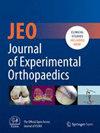Short learning curve associated with robotic total knee arthroplasty: A retrospective study
Abstract
Purpose
Robotic-assisted total knee arthroplasty (RA-TKA), which is increasingly used to improve surgical precision, can face adoption difficulties due to a learning curve marked by longer operating times. The aim of this study was to evaluate the learning curve associated with the VELYS™ robot in five surgeons from the same centre with different annual arthroplasty volumes using navigated assistance with personalised alignment. The primary aim was to assess the learning curve for each surgeon. Secondary aims were to identify the factors associated with extended operative times.
Methods
In this retrospective comparative study, 367 patients who underwent primary TKA between January and December 2024 were included, comprising 149 with robotic assistance and 218 with navigated assistance. The surgical learning curve, based on skin-to-skin operating time, was assessed using the cumulative summation method. Five surgeons were evaluated: two high-volume surgeons (>150 TKAs per year), a medium-volume surgeon (between 50 and 150) and two low-volume surgeons (<50). Pre- and intra-operative data (age, gender, body mass index, American Society of Anesthesiologists score, pre-operative hip–knee–ankle, range of motion, approach, size and implant constraint and type of assistance) were collected to identify extended operative time factors.
Results
The learning curve was reached after performing between 4 and 11 cases (11 procedures for surgeon no. 1, 4 for surgeon no. 2, 6 for surgeon no. 3, 4 for surgeon no. 4 and 4 for surgeon no. 5). The robotic operating time was 57.1 min compared to 54.1 min (p = 0.017) with navigation. The increase was statistically significant only for one low-volume surgeon (p = 0.008). Use of the robot (p < 0.001), surgeon (p < 0.001), use of a posterior-stabilised implant (p < 0.001) and varus of more than 10° (p = 0.0191) were independent factors associated with extended operative time.
Conclusion
The learning curve associated with VELYS™ was between 4 and 11 procedures. The small increase in operative time compared to navigation should not be a barrier to its adoption.
Level of Evidence
Level III, case–control retrospective analysis.





 求助内容:
求助内容: 应助结果提醒方式:
应助结果提醒方式:


